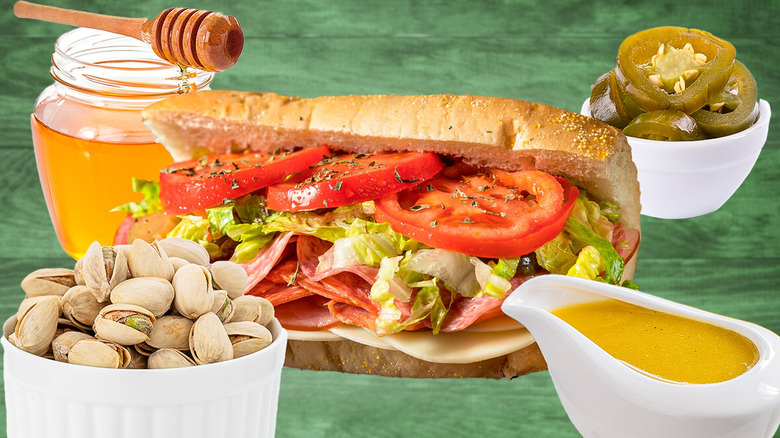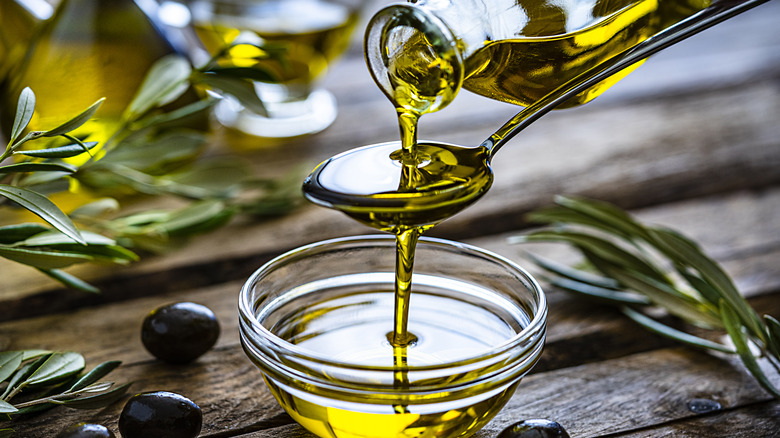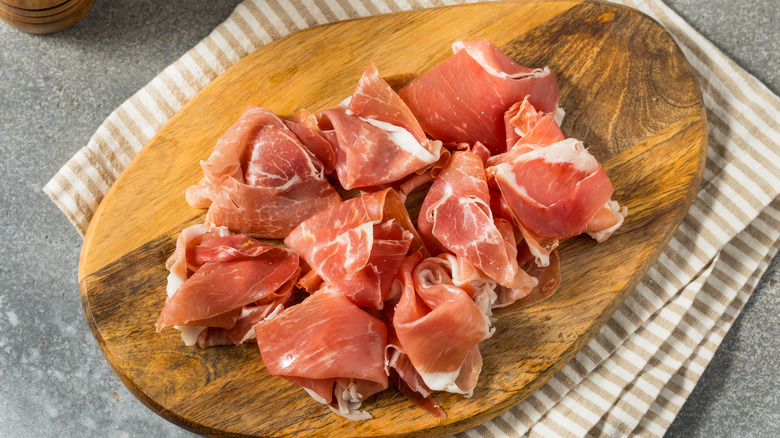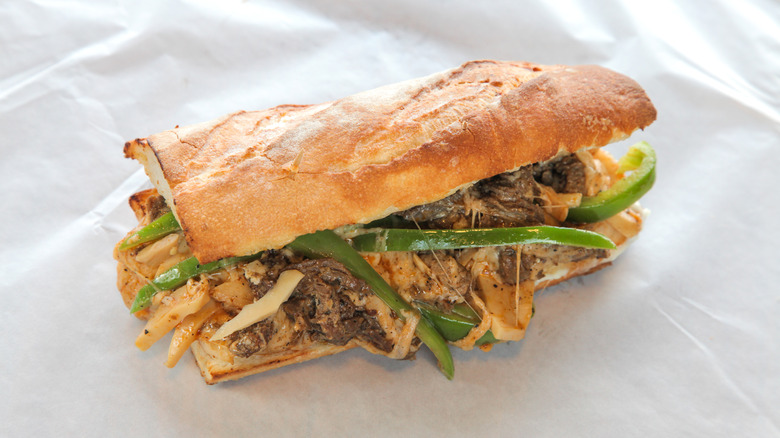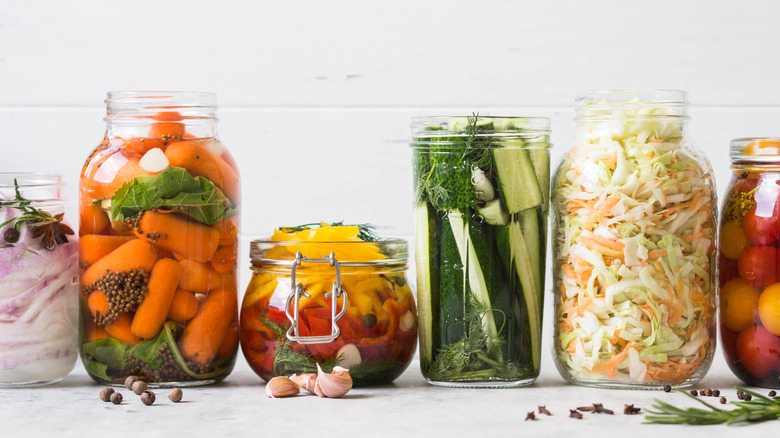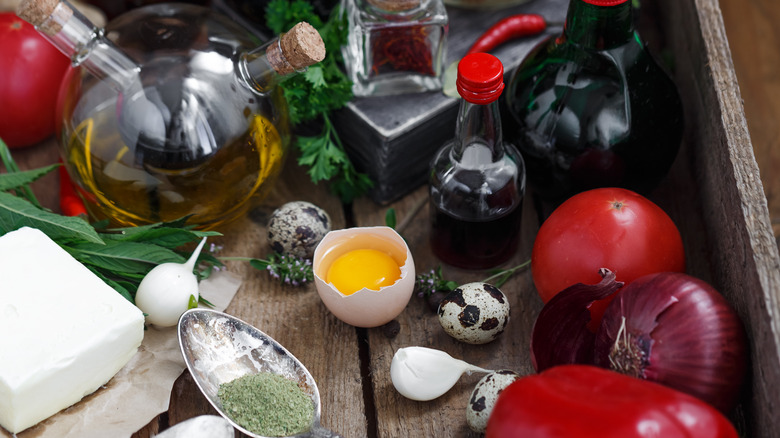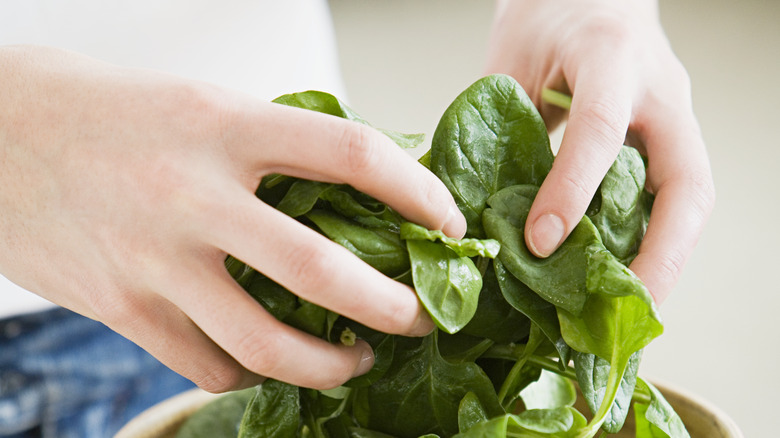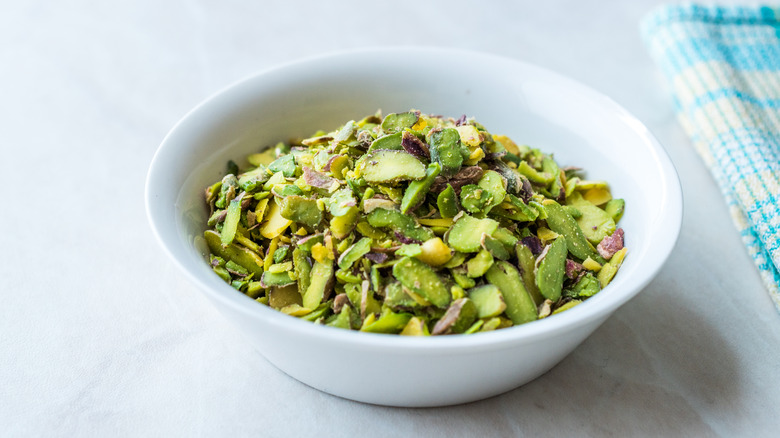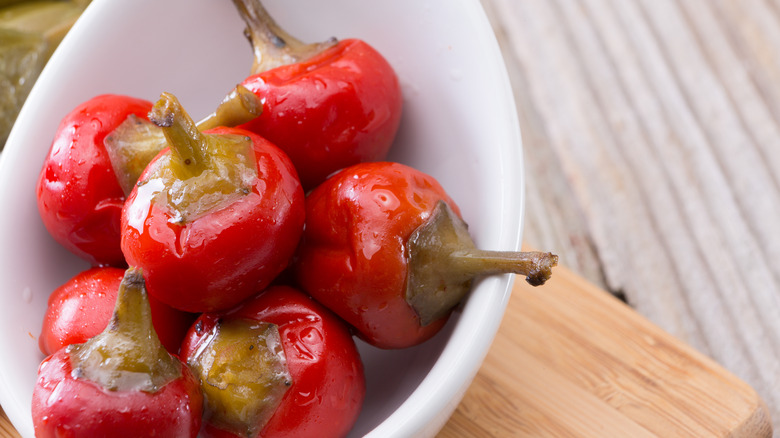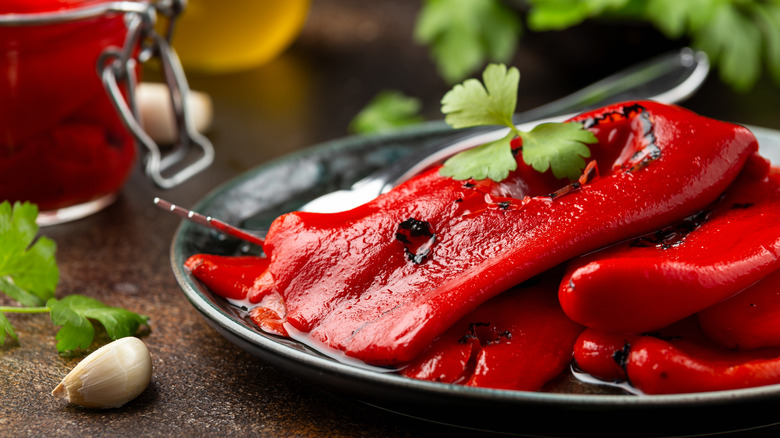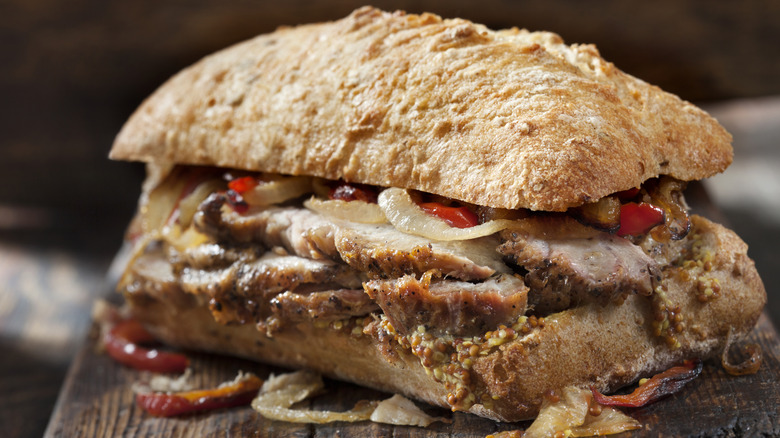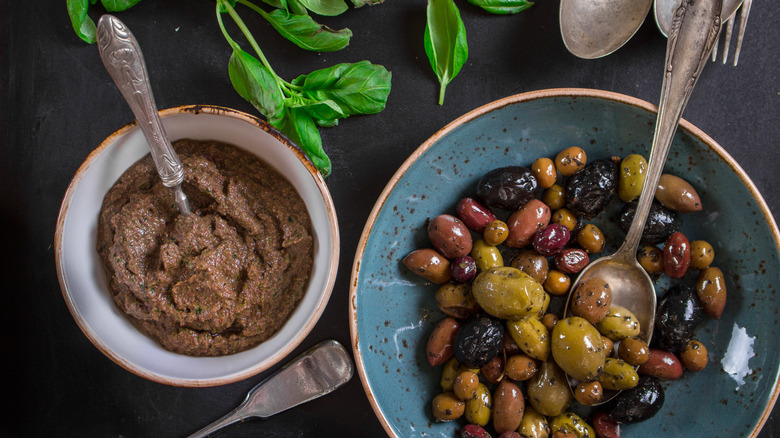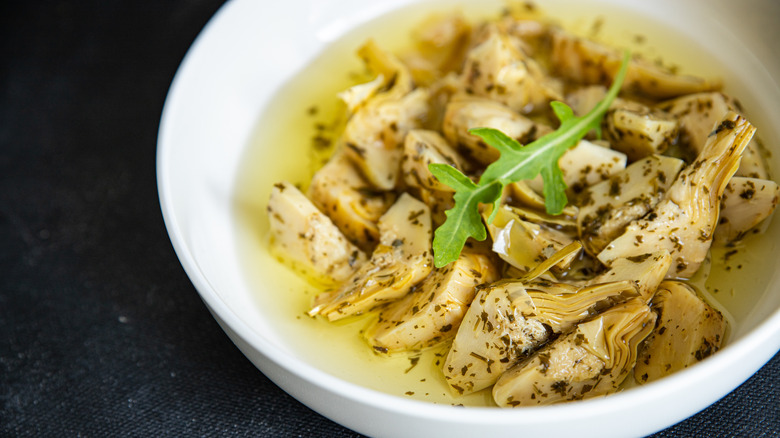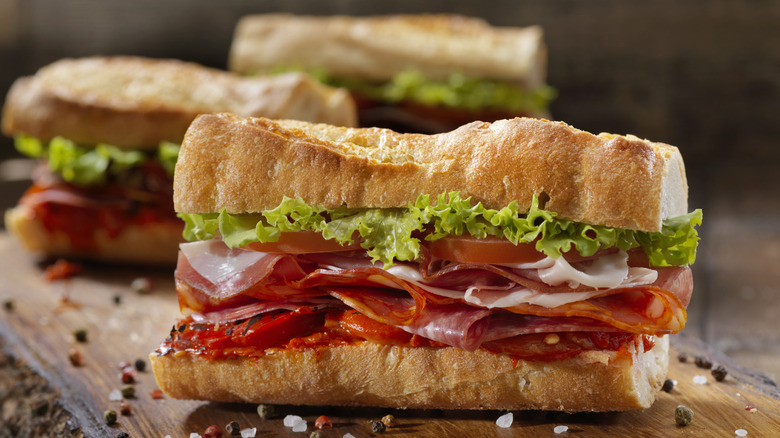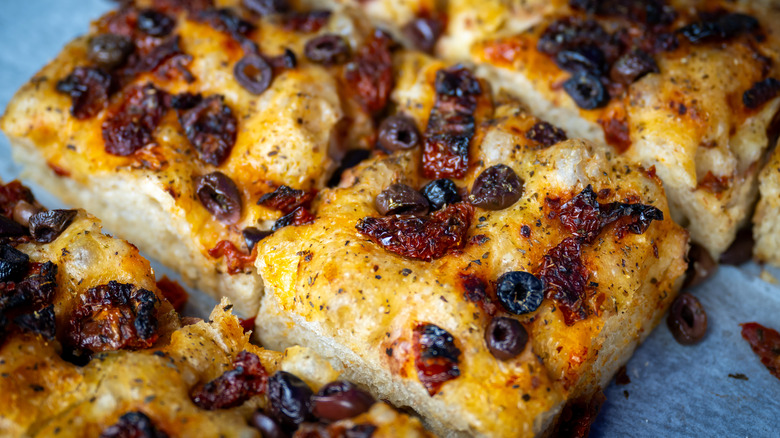Sandwich Making Experts Share 15 Ways To Upgrade An Italian Sub
There are endless variations of the Italian sandwich, but a few variables award it that title. The classic Americanized version we see labeled as the Italian on menus today is typically packed with a variety of meats, like ham, salami, pepperoni, soppressata, and capicola, along with shredded lettuce, tomatoes, onions, peppers, olives, and a cheese like provolone. All the tangy ingredients are usually tossed on a crusty, seeded roll and seasoned with oil and vinegar.
When and where did the Italian sub first make its debut? The general consensus is that it landed in the northeast corner of the U.S. around the 1940s. Different regions have since adopted their own approach and nickname to the signature Italian sandwich. Mainers like me refer to it simply as an Italian, while other New England towns know them as grinders. In Philly and Southern Jersey, you'll find hoagies, whereas up north and over in New York, you'll see subs and heroes. Regardless of the name, they'll hit the same spot.
While there's no wrong way to dress up your Italian sub, there are some secrets to the ideal preparation. To get the best intel, I headed over to Defonte's and Court Street Grocers in Brooklyn, before connecting with sandwich expert Paul Cacici — chef and co-owner of Ridgewood, Queens' Decades Pizza — and Parker Auger, a former sandwich-truck-owner-turned-culinary-teacher located in Portland, Maine.
1. An Italian sandwich isn't complete without olive oil
When ordering an Italian sub, you'll likely be asked if you want salt, pepper, oil, and vinegar. The answer is yes. There are a lot of things that separate Italian subs from the rest, but oil and vinegar may be the top differentiators. It's kind of like the seal of approval. As important as they both are, if one has to be sacrificed, it should never be olive oil.
If anyone knows about upgrading Italian sandwiches, it's Court Street Grocers. It's not the old-school Italian American deli that we may think of initially when hearing "sub," but that doesn't mean the business doesn't know how to do it. The Carroll Gardens sandwich shop opened in 2010 but has spread across two boroughs and gained some serious respect. While I was chatting with the staff, they confidently stated that an Italian sandwich isn't complete without olive oil. Plus, a huge perk of adding a good olive oil to your sandwiches at home is there's no chance of unwrapping a soggy roll.
2. Use thinly sliced cold cuts for your sub
A good sandwich is all about getting that perfect bite. While flavor is the driving force, the sandwich's texture and crunch play a leading role. Sandwich making is an art, and everything down to the angle of tomato slices can change the entire experience. The thickness of the sliced meats is no different. A thick chunk of salami won't only dominate a bite, but also make it much harder to chew. Thinner slices of meat also help to produce a more well-rounded sandwich by weaving around other ingredients as opposed to pushing them aside.
Cured Italian meats like prosciutto and capicola are expected to offer a bit more of a chew, but if the right cut is sliced thin enough, it will melt in your mouth. Parker Auger, former owner of southern Maine's sandwich cart Kind Stack, would choose prosciutto again and again when making a sandwich, and he strongly recommends the same. Whether it's that salty prosciutto, Black Forest ham, Genoa salami, or any type of cured meat, it will almost always taste better in a sandwich when sliced as thinly as possible. The thinner the slice, the more balanced the bite.
3. Lightly toast your Italian sandwich's bread
Even more than the contents of a sandwich, both Parker Auger and Paul Cacici argue that the bread itself is actually the most important aspect. "Even great ingredients will be lackluster without the right bread," Cacici adds. Nothing ruins a sub faster than a soggy roll or stale bread. As the vessel for all of the bold goodies stacked inside, the bread is responsible for holding it all together. A perfect sandwich bite will end with a slight crunch from the roll's crusty exterior, while the soft center acts as a pillow for the sandwich cargo. Ideally, an Italian sub is made with fresh bread that's still steaming from the oven, but if it's past bakery hours, there are other ways to replicate that at home.
Even one- or two-day-old bread can be revived with just a few minutes in the oven. Once it's taken on that light golden hue and is a little warm to the touch, it's time to get the sandwich-packing party going. The key word here is lightly; overdoing it on the toasting will result in an all-too-crunchy bite. The bread should help the sandwich, not make it more difficult to eat.
4. Adding any type of pickle brings that necessary bite
Some believe a sandwich just isn't a sandwich without pickles, but cucumbers typically get all the attention. There's nothing wrong with classic pickled cucumbers, but that type of tangy flavor with an added crunch can be delivered with nearly any pickled vegetable — and Italian antipasto proves it. With so many pickling options to explore, why limit yourself to just one?
If the amount of vinegar some delis drizzle on their subs tells us anything, it's that an acidic bite is true to Italian sandwiches. Giardiniera, an assortment of pickled veggies, is a common addition to an Italian snack platter, and it can serve the same purpose when spread on a sandwich. Typically composed of cauliflower, carrots, peppers, onions, and celery, giardiniera can be pulsed into more of a paste and act as a condiment. Pickled shallots and garlic are always a crowd pleaser, too, adding peppery undertones. Or, you could add a real level of spice with pickled jalapeños or habaneros.
5. Swap ordinary condiments for infused ones
Mayonnaise is the perfect creamy condiment, and it's often step one when making a sandwich. It adds just the right amount of tang and complements the salty flavor of Italian cured meats, although it carries most of its weight as a sandwich glue, keeping the ingredients intertwined with one another. It's all about the consistency with mayo, but the flavor itself doesn't need to stay so simple. It's incredibly easy to elevate mayonnaise by folding in bold ingredients like Calabrian chilies, horseradish, garlic, or even truffle for a five-star sandwich.
Mustard is the other famous sandwich condiment, and there are almost too many variations to keep track of. From Dijon to spicy brown, there's a mustard for every palate. The vinegary condiment is hardly mundane on its own, but it doesn't hurt to explore new flavors. Mixing in a swirl of honey or freshly torn parsley can add new flavor dimensions without even having to add another sandwich filling.
6. Toss the sandwich greens with dressing
Italian sandwiches aren't just about condiments, but tangy dressings, too. With such thick, crusty bread, these sandwiches can afford to be extra saucy without causing a soggy mess. It's one thing to drizzle on oil and vinegar as a finishing touch, but actually dressing the sandwich greens like a salad will take an Italian sub from a sad desk lunch to a perfect beach day sandwich.
Paul Cacici shares, "Some type of acid is usually the most often overlooked ingredient in my opinion." Whether that be a few dashes of vinegar or just a squeeze of lemon, the acidity helps cut the richness of the sandwich and create contrasting flavors. It's easy to toss a makeshift dressing together, and an herbaceous citrus-forward one is typically a winning choice. It can awaken any mixed greens with all the Italian flavors of parsley, oregano, and thyme. If you prefer a chopped salad over tossed, dress both your sandwich greens and chopped veggies. For the chopped Italian sandwich route, a creamier dressing incorporating mayonnaise kills two birds with one stone, combining several sandwich ingredients into one mixed pile of goodness.
7. Top your Italian sub with pistachios
Pistachios may not be the first thing to come to mind when thinking of sandwiches, but Italian meats don't shy away from nuts. Traditionally made with pork and lard, mortadella is often identified by its splattering of pistachios that add a buttery crunch. When sliced thinly, as mortadella should be, the tiny slivers of pistachio add an incredible nuttiness. If pistachios aren't blended straight into your lunch meat, they can be smashed into a paste and spread across the toasted roll, or just sprinkled on top as you would salt and pepper. Not only are pistachios buttery and earthy, but they have a hint of sweetness that lends itself well to the savory layers of a sandwich.
Other nuts, like smashed walnuts or cashews, aren't off limits, but pistachios are soft enough to add the perfect crunch without taking away from the existing textures of the sandwich. Pine nuts are probably the most comparable, and they're a great addition if you're leaning into herby flavors to create a pesto.
8. Add some sweet heat with spicy cherry peppers
If spicy cherry peppers aren't already in your Italian sub, they should be. They're a classic addition that spice things up and add some much-needed flavorful contrast with — you guessed it — that acidic bite. Many assume cherry peppers are as sweet as the name suggests, but they have a distinct spice that delivers an equal amount of zesty flavor. Some peppers are used to simply add a level of heat, but cherry peppers are employed for their unique taste, which is mildly sweet and fiery. These can be bought sliced in a jar, smashed into a paste, or easily pickled at home.
These little heated mouthfuls are a staple of Italian snacking — and this type of spread essentially looks like a deconstructed sandwich sans bread. Sometimes, cherry peppers are stuffed with herby ricotta, or simply tossed right on a plate for nibbling. But in our opinion, they're perhaps best used to dramatically upgrade an Italian sub sandwich.
9. Roasted red peppers are the ultimate Italian flair
After pizza and pasta, roasted red peppers may be the next Italian accouterment to spring to mind. They're often found jarred alongside other snacky bites, and they always have a place at the antipasto table. There's nothing like the nice crunch of a julienned bell pepper, but Italian roasted peppers are all about that soft, melt-in-your-mouth texture. If you have some time on your hands or a surplus of red peppers, our recipe is basically only two steps: brush with oil and roast. Ideally, these peppers are roasted over an open flame to the point of a little char, but as long as they're in the oven long enough to produce a touch of smokiness, they'll achieve what they're born to do.
The soft texture and tangy bite work on just about any sandwich, and Defonte's menu has made it clear that roasted red peppers know no bounds on the sandwich board. They have their moment in a variety of the old-school deli's options, like the Italian Stallion, which combines tender roasted peppers with prosciutto, fresh mozzarella, and fried eggplant.
10. Select a variety of meats for your sandwich
One of the great joys of sandwiches is that they can be customized to anyone's preference. Don't like cheese? No problem. Not a fan of lettuce? Steer clear. Prefer gluten-free bread? Have at it. The options are endless and entirely up to the sandwich lover — but being particular could also mean missing out on some incredible flavor combinations, like roast pork and fried eggplant or Italian sausage and ricotta. Popular sandwiches are typically packed with an assortment of meats, but many folks stick with the usual suspects like ham, turkey, salami, and pepperoni. Traditional Italian cuts like prosciutto and mortadella are rarely overlooked in sandwich creation, but that's just scratching the surface.
Auger may have dominated the Sicilian muffuletta at Kind Stack, but his favorite sandwich spotlights an often-forgotten sandwich meat: corned beef. According to Parker Auger, you can't go wrong with a Reuben, saying that it is perfectly balanced between acid and fats. An Italian sub doesn't have to be solely focused on cold cuts, either. Defonte's top seller, The Golden Boy, features a breaded chicken cutlet and prosciutto doused in vodka sauce and melted mozzarella.
11. Briny olives are a must for Italian subs
When ordering a classic Italian American style sub with "everything," sliced black olives will often be members of the party. The salty bite has somewhat of a buttery texture that helps bring all the ingredients together, but olives can also work wonders in other forms, like a creamy paste or a chopped salad. New Orleans' favorite Sicilian sandwich, the muffuletta, captures these flavors with its hearty spread of pickled veggies and olives. Yup, that timeless recipe manages to check two incredible sandwich additions off the list, proving how well olives can enrich vinegar-forward dishes. Defonte's highlights chopped olives with its classic Italian tuna sandwich, alongside bitter arugula and the usual fixings: lettuce, tomato, and onions.
Despite there being 139 different kinds of olives, the briny fruit seems to either be adored or despised. For those who tend to steer clear of the Mediterranean fruit, an olive tapenade could be the perfect medium. It's often the texture that throws olive haters off, so when blended into a creamy, savory paste, it might just be mistaken for a bold condiment.
12. Marinated artichokes can breathe new life into a sandwich
Artichokes are another regular on the antipasto platter, and this earthy vegetable can also be a welcome addition or the star of an Italian sub. Maybe it's the relatively high price tag, the laboring preparation, or the fact that they slightly resemble a flower about to bloom, but artichokes always seem to offer a sophisticated air. They're delicate and fresh, yet somehow also meaty and robust. With just a spritz of lemon or a simple citrusy marinade, the vegetable will really stand out and provide a bright taste that can be hard to come by in a sandwich.
To avoid the tedious steaming and peeling process, reach for a jar of artichoke hearts or grab pre-marinated ones at the store. The artichokes can be left as is and tossed right on a toasted roll. Or, try blitzing the artichokes into a tapenade to create a creamier sandwich spread — it's a picture-perfect example of how artichokes can totally revitalize a sandwich, with a once simple (albeit perfect) sub taking on new life.
13. Choose fresh mozzarella over low-moisture mozzarella
This probably goes without saying, but fresh mozzarella is a miracle worker for Italian subs. This does take the sandwich in a different direction, but one that's worth exploring. The caprese salad is a well-known Italian favorite and should tell us all we need to know, as it's nothing more than fresh mozzarella, tomatoes, basil, and a drizzle of olive oil.
With the incredibly rich taste of fresh mozzarella, you hardly need many other ingredients in your sandwich, and Defonte's is proof of that. The sandwich shop's simple caprese-inspired sandwich, dubbed the Antonio, captures those flavors on a crusty roll with a basil spread and vinegar to bind all the fresh ingredients together. Sometimes, the packaged stuff works just fine, especially for melting, but nothing can take the place of fresh mozzarella made by hand — and any Italian American would likely agree. If a sandwich is craving an even richer creaminess, burrata also won't disappoint.
14. Consider the order of your Italian sub's ingredients
With the many layers of an Italian sub, the order in which you add your ingredients matters. When done well, even the simplest of sandwiches can wow a seasoned chef. Paul Cacici says his favorite sandwich can change on any given day, but an unambiguous BLT always hovers around number one. Despite being only three ingredients, it's a perfectly balanced sandwich, and that has to do with both quality and assembly: After slathering the bread with mayonnaise, build a better BLT by layering fresh tomato, followed by crispy bacon and crunchy lettuce for optimal balance between differing textures. But not all ingredients are as friendly when stacked next to each other. Mayo and cheese, for example, almost form a glue-like bond, ruining the texture.
The same idea applies to Italian sandwiches — and you might even consider making an Italian version of a BLT by swapping the classic ingredients with pesto, mozzarella, tomato, pancetta, and arugula. But make sure each layer is even, as well. Sandwiches combine unexpected ingredients to create a new flavorful and textural experience, but that can't happen if, for instance, one bite is only cheese or doesn't have any cheese at all. By taking the order and well-distributed stacking of ingredients into consideration, every mouthful of your Italian sub will be the idyllic sandwich bite.
15. Italian sandwiches need to be seasoned too
Last, but certainly not least, this may be the most life-changing upgrade to Italian subs — and it can be as basic as some salt and pepper. We don't hesitate to season our dishes, so why would preparing sandwiches be any different? Seasoning is what sets homemade sandwiches apart from the ones we buy: Good delis season every ingredient, including the bread. As the foundation of a sandwich, bread choice is critical. Quality is without a doubt the first thing to consider, but second would be spices.
Court Street Grocers' Macho Man or Woman sandwich takes mouthwatering pork shoulder and presses it between two pieces of garlic-toasted ciabatta. And while there's no doubt that plain ciabatta would still do it justice, the garlic takes it to a whole new tier of sandwich. Opting for hearty breads that carry their own ingredients, like olive focaccia or sun-dried tomato Tuscan bread, can make it easier to create a dynamic sandwich with minimal ingredients. But even when using a simple Italian roll, be sure to finish the sandwich with some salt and pepper at the very least.
